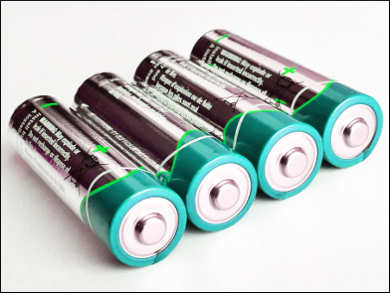For lithium ion batteries and other devices that store charge using ion insertion, nanowire electrodes can provide more power than films made of the same materials. However, nanowire electrodes can corrode and dissolve after many cycles of charging and discharging.
Reginald Penner and colleagues, University of California, Irvine, USA, stabilized 5-mm-long nanowire electrodes over a typical lifetime of more than 100,000 cycles, with an average Coulombic efficiency between 94 % and 96 %. Their electrodes have a central gold nanowire, which provides electrical access to the surrounding ion insertion medium, an electrodeposited MnO2 shell.
The researchers first observed the nanowires in a liquid polycarbonate electrolyte. After 4000 charge/discharge cycles, the electrodes showed significant MnO2 loss and separation of the shell from the core nanowire, leading to irreversible capacity loss. The key to stabilizing the nanowires was to use a gel electrolyte made from poly(methyl methacrylate) in LiClO4. The gel electrolyte seems to provide mechanical confinement and may increase the fracture toughness of the shell, which stabilizes the electrodes while allowing the lithium ions to move freely into and out of the MnO2 layer.
- 100k Cycles and Beyond: Extraordinary Cycle Stability for MnO2 Nanowires Imparted by a Gel Electrolyte,
Mya Le Thai, Girija Thesma Chandran, Rajen K. Dutta, Xiaowei Li, Reginald M. Penner,
ACS Energy Lett. 2016.
DOI: 10.1021/acsenergylett.6b00029


